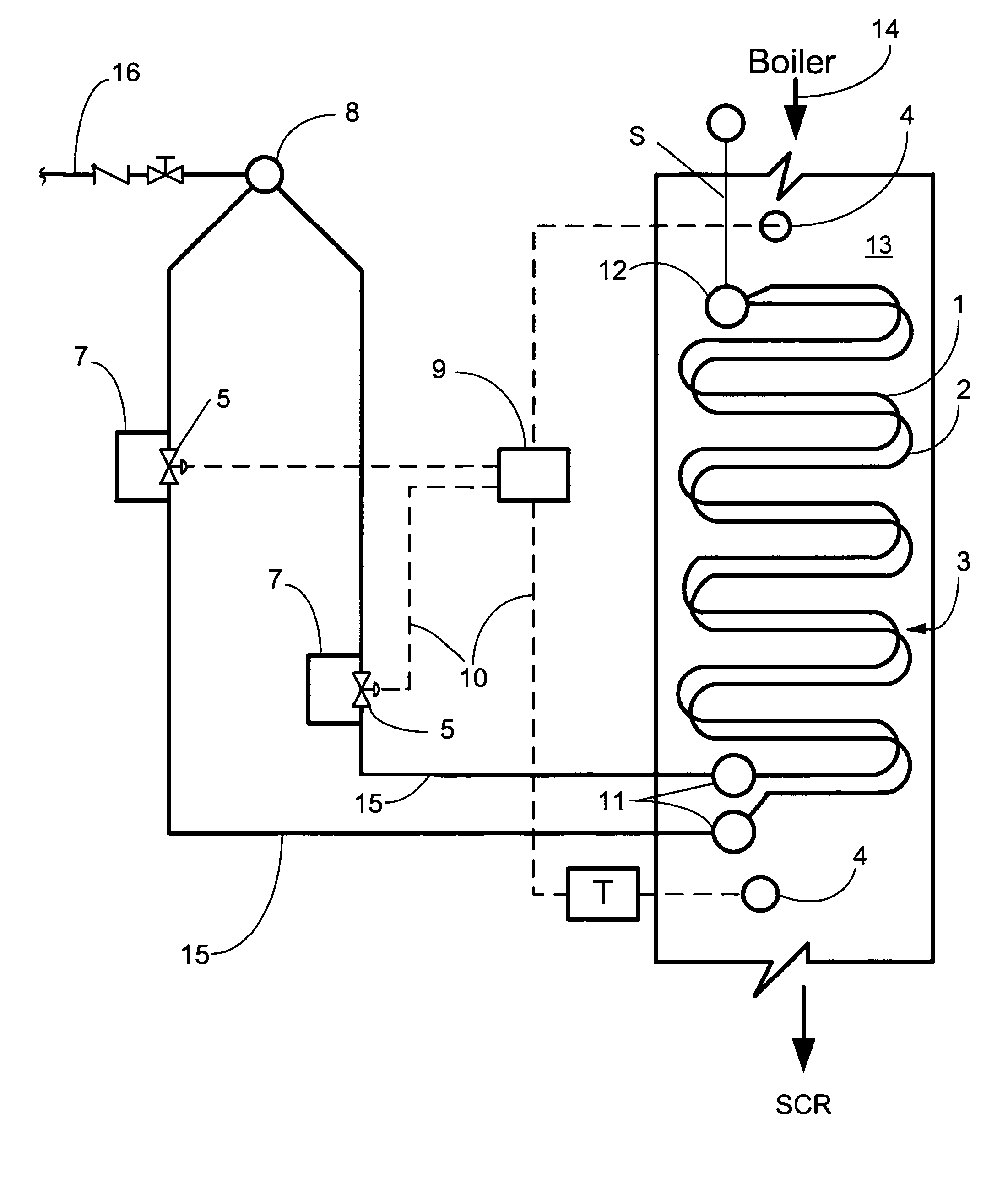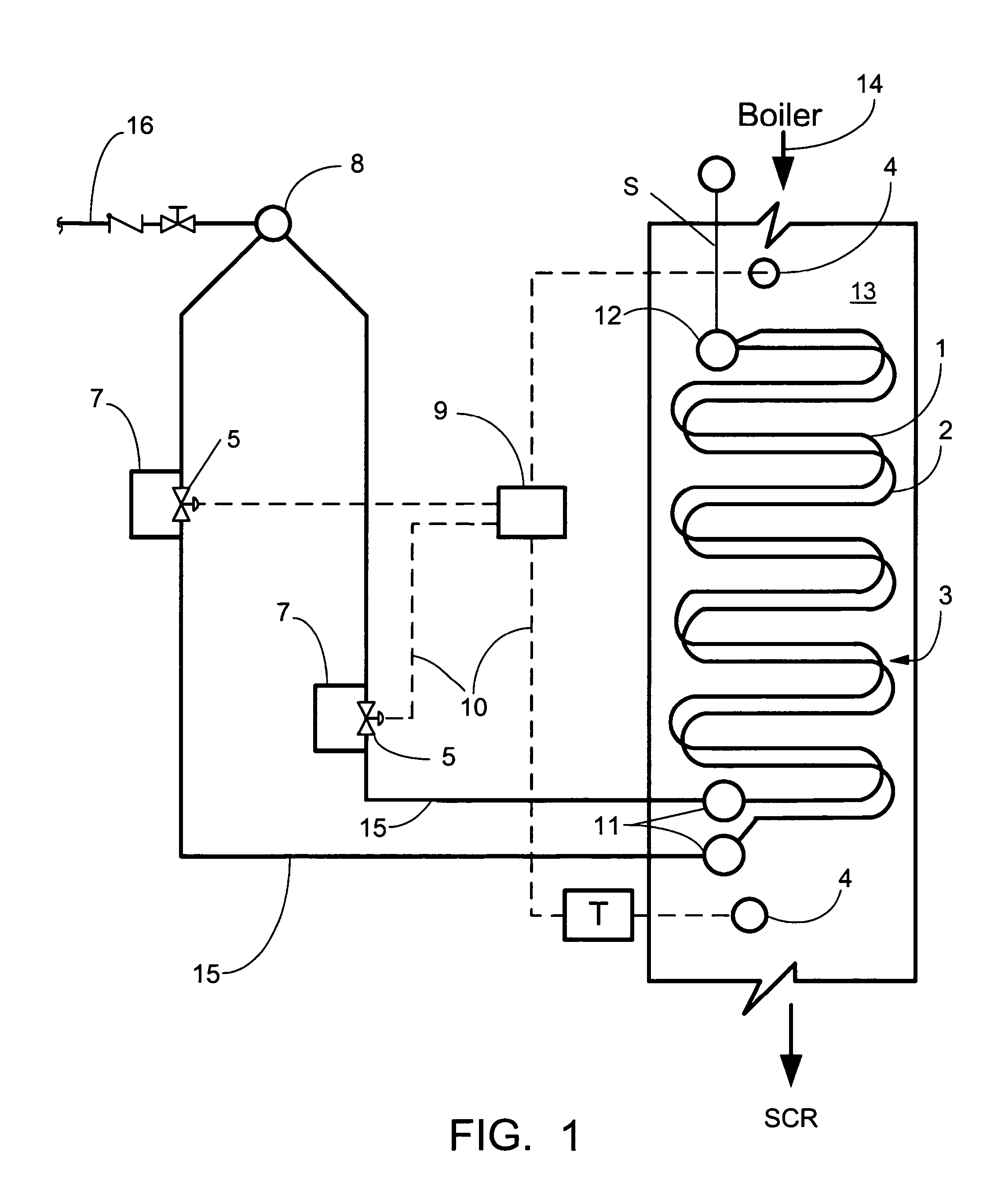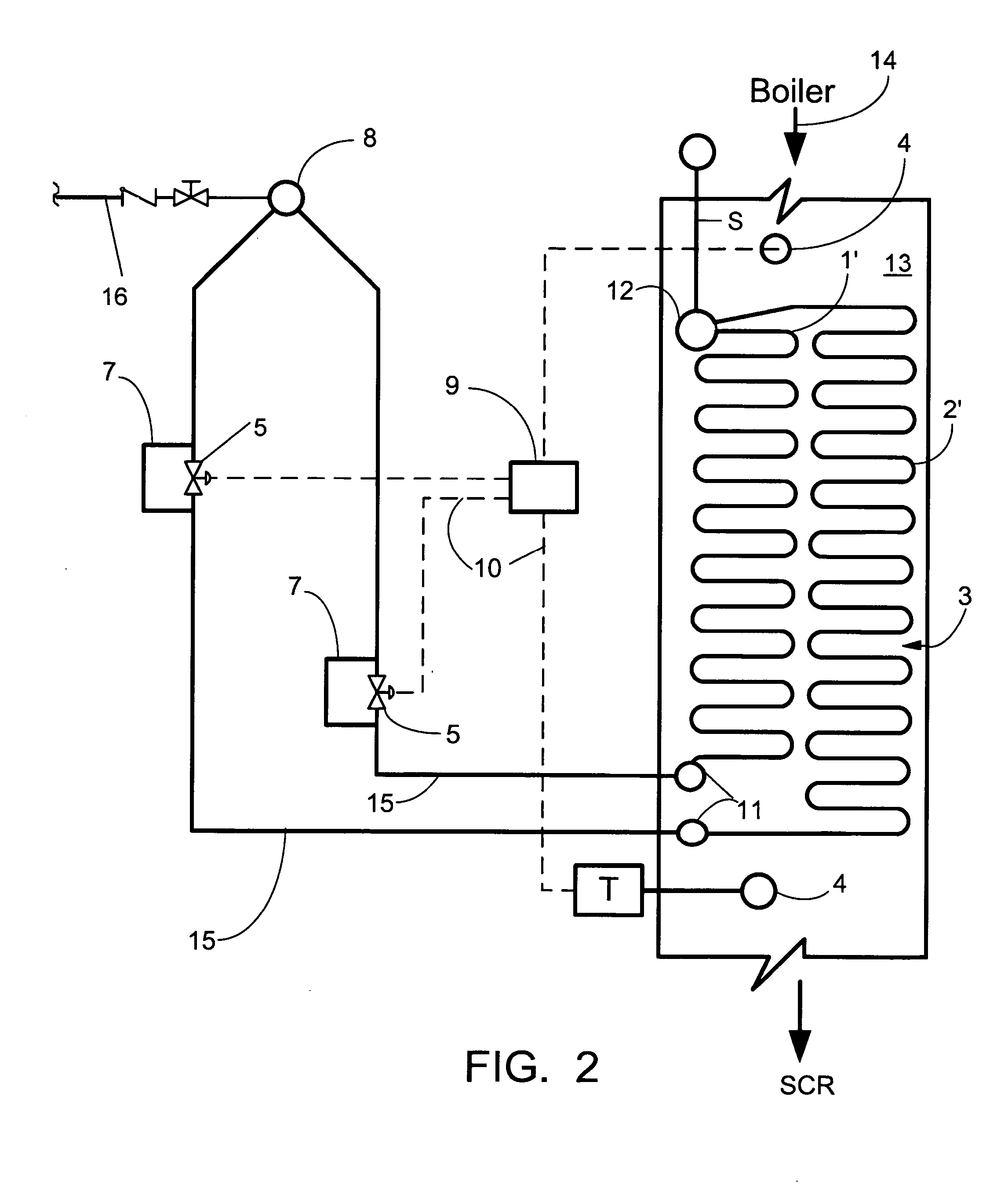Multiple pass economizer and method for SCR temperature control
a technology of economizer and economizer, which is applied in the direction of machine/engine, steam generation using hot heat carriers, lighting and heating apparatus, etc., can solve the problems of increasing the gas outlet temperature of the economizer, reducing the total gas side heat transfer of the economizer, etc., to reduce the heat transfer, increase the outlet temperature of the flue gas passing, and reduce the effect of water flow
- Summary
- Abstract
- Description
- Claims
- Application Information
AI Technical Summary
Benefits of technology
Problems solved by technology
Method used
Image
Examples
Embodiment Construction
[0023] Referring now to the drawings, in which like reference numerals are used to refer to the same or functionally similar elements, FIG. 1 shows an economizer 3 for receiving flue gas generated by a boiler (not shown), located upstream of and in fluid communication with the economizer 3. As used in the present application and as is known to those skilled in the art, the term boiler is used herein to broadly refer to apparatus used for generating steam and may include both drum-type boilers and those of the once-through type. For a general description of such types of boilers or steam generators, the reader is referred to the aforementioned STEAM 41st reference, particularly the Introduction and Selected color plates, and Chapters 19, 20, and 26, the text of which is hereby incorporated by reference as though fully set forth herein. The economizer 3 includes a flue inlet and a flue outlet, and is located in a convection pass 13 upstream of and in fluid communication with a Selecti...
PUM
 Login to View More
Login to View More Abstract
Description
Claims
Application Information
 Login to View More
Login to View More - R&D
- Intellectual Property
- Life Sciences
- Materials
- Tech Scout
- Unparalleled Data Quality
- Higher Quality Content
- 60% Fewer Hallucinations
Browse by: Latest US Patents, China's latest patents, Technical Efficacy Thesaurus, Application Domain, Technology Topic, Popular Technical Reports.
© 2025 PatSnap. All rights reserved.Legal|Privacy policy|Modern Slavery Act Transparency Statement|Sitemap|About US| Contact US: help@patsnap.com



